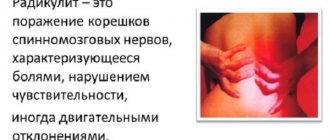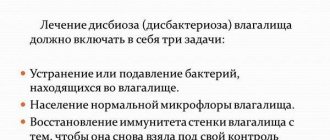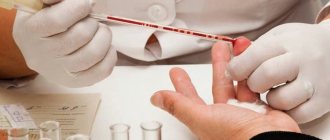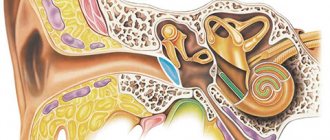Dyslalia is a disorder of sound pronunciation in children with normal hearing and intact innervation of the articulatory apparatus. With dyslalia, there may be a violation and difficulty in pronouncing any phonemes of the child’s native language.
Dyslalia is characterized by replacement, confusion, distortion or absence of sounds in the child’s oral speech. Diagnosis of dyslalia involves a speech therapy examination of the structure and mobility of the speech apparatus, as well as diagnosis of the state of current sound pronunciation and phonemic hearing. In some cases, consultation with highly specialized specialists (dentist, neurologist, otolaryngologist) is necessary.
The causes of this speech disorder can be organic, hereditary, congenital or acquired factors.
Causes of dyslalia
Dyslalia develops mainly as a result of underdevelopment of the speech apparatus. This may not be obvious at first glance, even to doctors. Some defects are diagnosed after the fact, only after careful, targeted examination. Others are visible to the naked eye. However, this is not the only group of reasons. Separately, we can talk about the social prerequisites for deviations in the verbal development of a child. Among the immediate provoking factors.
Pathologies of the structure of the speech apparatus
- Tongue frenulum and other tongue problems
A short frenulum occurs in almost 12% of patients worldwide. And these are just the documented cases. Most likely the number is much higher. But the anatomical defect is not always so pronounced that it interferes with the normal formation of articulation and diction. These are rather extreme cases. The restoration is surgical, because in most cases it is not possible to adjust the articulation to the characteristics of the speech apparatus.
Other possibilities include a tongue that is too thick or underdeveloped. Such forms of deviations are much less common. As a rule, they are part of complex pathologies, including those of chromosomal origin. For example, within the framework of some syndromes involving general physical and mental underdevelopment. In such a situation, the pathology is of a fundamental nature; it is necessary to work in several directions at once: correction of cognitive functions, elimination of anatomical defects. Even then, no one guarantees success.
- Problems with the structure of the jaw and teeth
There are many options. From too small teeth to their incorrect location. With ectopia (displacement) of the fangs relative to the upper row of teeth, speech defects that are difficult to correct are possible. Changing this state of affairs requires the participation of an orthodontist and a dentist. After training, the patient, however, has the opportunity to adjust speech activity to the characteristics of his own body.
- Less obvious reasons: high or low sky
The deviation is common, found in 20% of the world's population. But, as a rule, anatomical changes are more likely to relate to errors and individual characteristics, because the problem is imaginary and does not cause any discomfort to the person.
- It is found in the practice of orthodontists, maxillofacial surgeons and a group of more severe pathologies. For example, cleft palate (cleft palate), split lip (cleft lip) and some others
These conditions are controversial; practitioners are still debating which category to classify them in. Many experts insist that this is not dyslalia, but rhinolalia. The question is controversial. However, the essence remains the same. Speech, diction and articulation disorders. Without treatment, there is no point in correction, because it is basically impossible. Surgical removal of the defect is required. Complex defects also occur. Like abnormal ear formation, cleft lip, intellectual deficit in the system.
- Separately, they talk about problems with bite
The correction is carried out under the supervision of an orthodontist. It is advisable to start recovery earlier. In adulthood, it is possible, but presents difficulties due to the aesthetic problems of therapy (wearing braces) and the difficulties of the rehabilitation period. It will take a lot of time, which is usually not enough even for basic things.
Social reasons
Social reasons are just as common. As experts note, one goes hand in hand with the other. Children with anatomical defects often encounter this category of provoking factors.
- Mental deficit
Patients with mental retardation later acquire literate and correct oral speech skills. Within the framework of such deviations, this is considered normal. We are not always talking about a persistent deficit. Many children gradually develop and “catch up” with their peers, comparing themselves intellectually. Some diseases, such as oligophrenia (especially in the stage of imbecility or idiocy) do not acquire the ability to speak at all or are limited to individual words, sounds, mooing, and inarticulate muttering. Moronism presupposes the possibility of correcting the pathology under the supervision of a group of specialists, even in this case the chances of recovery are high.
- Restraint of a child’s speech development by the environment
In the first years of life, the psyche is most susceptible to stimuli and agents of influence from the outside. These include parents, grandparents, aunts and uncles, and closest relatives. The problem is in the methods of education and human development. Babysitting and imitation of children's illiterate speech leads to a delay in verbal activity. In many cases, the child remains with his impairments until consultation with a speech therapist. Often in such families the child is left to his own devices, little is spoken to, and books are not read to him.
The development of the intellectual component is one of the key forms of education. Correction in the future is difficult, because the patient internalizes an abnormal pattern of speech activity. It is fundamentally fixed in the consciousness and subconscious. It takes several months to achieve a positive result. Perhaps more.
- Weak immunity, susceptibility to infectious diseases
A clear correlation has been identified between the level of the body's defenses and the likelihood of dyslalia. It is impossible to say exactly what this is connected with. Doctors suggest that the reason is the child’s lack of social connections and contacts with the outside world. Being weakened, the patient does not go to kindergarten or attend preschool institutions. Therefore, it does not perceive speech models and does not create its own based on them. Such dyslalia is relatively easy to correct. Immunity can be considered an indirect culprit. In fact, we are talking about problems of early socialization.
- Birth in a family with parents belonging to several ethnic groups and nations
When trying to teach a patient several languages, pronounced dissonance arises. Pronunciation becomes blurred, fragments from the first are woven into another language. The only way to avoid such a problem is to first teach the child to speak one language, and only then, as soon as a strong skill of expressing thoughts in a competent way is formed, begin teaching a second language. Correcting this type of dyslalia will require effort on the part of the parents themselves.
- Preschool children have insufficient mobility of the speech apparatus
It is extremely rare that this is the result of organic pathologies. Usually we are talking about a banal reluctance to develop a skill. This is a feature of the patient’s psyche and character. The ideal option in this case would be to stimulate proper activity. It is better to teach speaking skills in a playful way, so that the skills are better absorbed and there is no violent element. It is better to work under the supervision of a competent speech therapist and follow all his recommendations at home.
- Pedagogical neglect
This is a special case of problems in education. Inherent in dysfunctional families and more. Anomalies of diction and articulation are ignored, the child is left to his own devices and, due to his age, does not strive to change the state of affairs.
Social reasons in any case require the participation of parents in the first place. Also the immediate environment. Because the efforts of a speech therapist will not be enough if the environment persistently strives to return the patient to the original negative position.
Lesions of the hearing aid and central nervous system
- Hearing problems. For example, hearing loss, a predominant loss of the ability to perceive sounds on one side
Dyslalia of this kind is always induced. The patient simply does not grasp the correct pronunciation of speech structures. Therefore, he repeats them the way he perceived them. Therapy requires restoration of the ability to hear. It is possible to use a hearing aid. Only then can speech correction begin. Usually it does not present much difficulty.
- Anomalies of the central nervous system as a provocateur of the disorder are extremely rare
Usually these are reversible disorders in the cerebral cortex against the background of congenital or acquired pathologies. Encephalopathy, tumors (rarely), previous neuroinfections. In such a situation, an adult who until recently spoke normally can also become a victim of dyslalia. It will be necessary to combat organic pathology and only then can we talk about treating dyslalia itself.
Preventive measures
The child must have a role model.
Parents and peers must pronounce sounds correctly. A visit to a speech therapist, dentist, orthopedist, or surgeon is a necessary preventive measure.
One of the causes of pathology is psychological trauma. It is worth protecting the child from the possibility of such damage. This means that children require a calm environment, and most importantly, the absence of quarrels in the family and proper attention from both parents.
Home development also serves as prevention. You can solve problems for the appropriate age, practice writing, develop memory with the help of cards with images.
Differences between dyslalia and other similar disorders
Dyslalia must be distinguished from dysarthria and aphasia.
Dysarthria
This is always the result of damage to cerebral structures. The result is a violation of the innervation of the speech organs. The problem lies in the lack of mobility of the tongue, lips, and the problem of coordinating their micromovements. Dyslalia is of a functional nature. Corrected by speech therapy methods. Less commonly, there is a local disorder. Anatomical problems, underdevelopment of the speech apparatus. The differences between dyslalia and dysarthria are obvious after a neurological examination. It’s impossible to tell anything specific by eye.
Aphasia
It becomes the result of generalized brain damage or dysfunction of the temporal and frontal lobes. It occurs in fundamental pathological processes such as stroke, which destroys nerve tissue and connections, neuroinfections and others. The patient loses previously acquired oral speech skills. As a rule, pathology is characteristic of older people, not children. If with dyslalia a person is able to understand the essence of the problem, and often himself recognizes its presence, aphasia makes this almost impossible. The deviation is noticeable only to others. Aphasia is the result of a previous pathology and a form of neurological deficit. This is a key feature. In addition, it is almost always accompanied by other symptoms.
This method of differentiation plays a key role in diagnosis. Because you need to find out the immediate cause of the problem and the form of deviation. Without this, there can be no effective recovery.
Forms of dyslalia, classification of pathological changes
The classification of the pathological process (relatively speaking) is carried out on several grounds. Each subdivision method is used equally often in clinical practice.
Based on the scale of speech dysfunction:
- A simple form of dyslalia. Accompanied by a violation of the pronunciation of one sound or one group of sounds. For example, hissing ones, the letter “r” and others. Most common. Often patients carry the problem into adulthood and are in no hurry to part with it.
- Complex dyslalia. As the name suggests, it leads to the reduction of several groups of sounds when speaking. It occurs against the background of pedagogical neglect, pronounced problems with the speech apparatus and insufficient development of the child in the intellectual sphere. The etiology of the process is more complex and it is not always possible to understand at first glance what is going on.
Based on the origin of the pathological process, the following forms of dyslalia are distinguished:
- Organic. It's mechanical. It is the result of anatomical defects in the structure of the speech apparatus. Less common in the brain, with neuroinfections, tumors and other anomalies. Mechanical dyslalia is caused by problems of an organic nature; they require surgical correction. Although not always. First, conservative, speech therapy methods are used. The doctor seeks to understand whether it is possible to adapt the patient to the peculiarities of his articulation.
- Functional. Becomes the result of social causes and reversible problems with the brain. The causes of functional dyslalia lie in the child’s environment. Less common in past pathologies that cause dysfunction of the central nervous system. Working with a speech therapist can change the situation dramatically. It takes from 2 months to six months or more. The question is individual.
If we talk about brain pathologies, the functional type is divided into two more subtypes:
- Sensory dyslalia. The result of disruption of the speech-auditory area. Accompanied by the inability to adequately perceive spoken sounds and repeat them independently. Occurs in 45% of the total number of recorded cases.
- Motor dyslalia. Accompanied by damage to the speech motor center. The coordination of movements of the lips, tongue, and speech organs in general is impaired.
Both types involve fighting the root cause and working with a speech therapist.
If we talk about functional forms in more detail, we can distinguish three more subtypes of the disorder:
- Acoustic-phonemic dyslalia. Perception of similar sounds as identical. Leads to replacing one with another without understanding the difference. The disorder leads to general speech problems. She becomes incomprehensible to others.
- Articulatory-phonetic form. Occurs especially often. The essence is the distortion of the pronunciation of one or several groups of sounds at once.
- Phonetic form. The essence is the inability to perceive by ear the correct structure of what is being said. Within individual words. It is possible to form your own vocabulary, which is used by the child in everyday life. Therefore, the logical component does not suffer. Each time the child hears the same word, but in his own way, weaving it into the fabric of general statements. The longer such abnormal development of the speech apparatus and mental perception of verbal activity continues, the more difficult the recovery.
If we take as a basis the groups of sounds with which the patient has problems, we can name the following group of specific forms:
- Rotacism (burr, in common parlance).
- Sigmatism (lisp, inability to pronounce hissing sounds normally).
- Lambdacism (problems with pronouncing sounds and combinations, mainly “l” or “l”).
Others are somewhat less common. The list is not exhaustive.
Based on the quantitative characteristics of the disorder, two more forms of dyslalia are distinguished as a pathological process:
- Polymorphic. Accompanied by a combined deviation in speech activity. For example, rhotacism + yotism (problems with the pronunciation of “th” + sigmatism). There are many options.
- Monomorphic. As the name suggests, there is a reduction in only one group of sounds. This is a classic form and also occurs in adult patients.
We can also talk about types, depending on their conditional normality:
- Age-related dyslalia. Occurs in children under 3-6 years of age. Accompanied by imperfect speaking processes due to young age. The problem goes away on its own after some time.
- An abnormal or pathological variety. If the deviation does not disappear on its own or, worse, worsens.
Dyslalia is most common in children. Adults suffer from it relatively rarely, because the speech apparatus, like the cerebral cortex, are already formed. At the same time, if correction is not made at the right time, the adult will retain pathological verbal habits for life. Provided that no correction is carried out. In some cases, the disorder occurs after a trauma, brain infection, or stroke. Dyslalia can also be an acquired defect. Therapy depends on the type and origin of the deficiency phenomenon.
How to help a child?
In the mechanical form, surgical correction of deficiencies of the speech organs is performed. The best time for this is under 7 years of age. After the tissue has healed, classes with a speech therapist begin. With a functional form, the neurologist prescribes a course of drug treatment, if necessary. Speech therapy assistance is carried out in several stages:
- development of auditory memory, formation of the ability to distinguish phonemes, for this purpose articulatory gymnastics, massage, speech motor skills are prescribed;
- production of sounds, memorization of them by the child. The exercises are based on the principle of imitation;
- development of communication skills.
With the age-related form, the child does not require special assistance, but parents need to closely monitor speech development. If after 6 years errors in the pronunciation of sounds have not disappeared, then this indicates a serious violation, you need to urgently visit a speech therapist.
Symptoms and clinical picture depending on the type of disorder
The clinic of dyslalia is represented by essentially identical manifestations, regardless of the case:
- Distortion when pronouncing letters and sounds. Formally, the structure of the word is preserved. In most cases, others understand what the patient is talking about.
- Replacing letters and sounds with similar ones. Voiced to voiceless (“b” to “p”) and so on. This makes it significantly more difficult for a person with dyslalia to speak and understand speech. In severe cases, the communication process is impossible at all.
- Finally, there is the omission of individual letters or sounds, where they should not be reduced.
One of the following signs or several at once is observed. Depends on the type of process.
Disturbances in the speaking process lead to a whole host of problems in the socio-psychological sphere:
- Lack of self-confidence, both in children and especially in adults. A person tries to talk less, not to participate in games, discussions of issues, or conversation. And then he completely withdraws into himself. Tries to leave the house less. Social isolation and lack of contacts and verbal activity lead to aggravation of the situation. Therefore, one of the main directions of treatment is based on constant communication between a person and others.
- Formation of phobias. The classic version is social phobia. Fear of society in its various forms. From minimal interest groups to a group in kindergarten, a class at school, a team at work, etc.
- Irritability, apathy, etc. are signs of emotional dissatisfaction and constant stress. Recovery without interaction with a speech therapist is not effective.
If a person with dyslalia is not helped in a timely manner, complications arise in other areas of speech activity.
Problems arise with the use of cases and numerals. These constructions are based on the variability of endings and the very structure of the spoken word. Written language also suffers. Although not always. A person’s grammatical structure and vocabulary may be normal or even beyond the average. Which indicates the preservation of intelligence and other higher nervous functions.
Diagnosis of dyslalia
The examination is carried out under the supervision of a group of specialists. First of all, it is recommended to contact a speech therapist. As part of the primary diagnosis, basic studies are prescribed.
The speech therapist interviews the child's parents. It is important to collect a complete life history from birth to the current day. Factors to be established: intellectual development, adherence to established development standards, nature of nutrition. If there are other children in the family, do they have problems with speaking? Also past and current illnesses. Everything is as detailed as possible. This is necessary to identify the suspected cause of the pathological process.
Oral questioning of the child himself. A series of specific tests need to be carried out. Usually the patient is given short words and needs to repeat them. If the child copes well with these tasks, they become more difficult. Longer words are offered, then whole combinations or sentences. Gradual complication makes it possible to identify at what stage the disorder begins and how pronounced it is. The gradation varies widely. This method is the most accurate. When an older patient is examined, reading skills are also checked.
Detection of problems with diction and articulation allows us only to state the fact of such. Initially, the organic nature of the pathology is assumed. Then it is necessary to examine the child or adult under the supervision of specialized specialists. These include an otolaryngologist (ENT), dentist, orthodontist, and, if necessary, a neurologist. Basic fundamental research:
- Visual assessment of the oral cavity, bite, teeth and their condition.
- Examination of the condition of the oropharynx and nasopharynx for organic congenital or disease-related defects.
- Routine neurological examination. Testing reflexes in dyslalia allows us to identify additional symptoms that are present in most cases when the functioning of the cortex is disrupted.
What does not relate to the causes of the development of functional dyslalia presumably relates to organic factors. Instrumental diagnostics can come to the rescue:
- Electroencephalography. Used to assess the functional activity of the brain. Its individual sections. Based on the nature of electrical activity, we can talk about a particular lesion, but without specifics.
- When there are suspicions of anatomical defects, a general tomography of the brain is performed. Further, if necessary, targeted MRI of cerebral structures, a separate area.
In the absence of organic causes, social conditions are studied. This is where a child psychologist can come to the rescue. Pedagogical neglect and educational errors are a common cause of speech disorders.
Differential diagnosis is also carried out using instrumental methods. Through electroencephalography, MRI, CT, angiography (in adults), ultrasound of cerebral vessels and duplex scanning of the arteries of the neck.
Examination of children and adults can be time consuming. From several days to a month. The reason is not always obvious; it is possible to repeat the diagnosis in whole or in part.
Forecast
With timely and competent correction, in 95% of children the disorder is completely corrected within 4-6 months. The main condition for success is regular classes and strict adherence to the recommendations of the doctor and speech therapist.
Is dyslalia dangerous? Unfortunately, some parents may even be touched by a child with a lisp, and they wait for the child to “outgrow” and magically cope with this problem on his own. But the disorder is dangerous because against its background more complex mixed speech defects easily develop, which require difficult and lengthy correction.
Publication date: 03/10/2020. Last modified: 07/07/2020.
Treatment of dyslalia
Therapy is challenging even for experienced professionals. There is an approximate algorithm for correcting an abnormal condition, regardless of the patient’s age.
How many stages of correction work are there for dyslalia?
There are three in total:
- Preparatory. It consists in eliminating the fundamental causes of the violation; this is the basis that will allow you to achieve a high-quality result.
- Formation of basic speech skills. An audit of existing skills is carried out, then new skills are introduced or those that were formed incorrectly are changed.
- Communication stage. Instilling normal communication skills, taking into account the results achieved.
Treatment of the disorder and speech therapy involves a fractional division of each phase of therapy.
Preparation
Elimination of the organic cause. If there is one. Usually by surgical methods. Then specialized gymnastics and massage are prescribed. The set of exercises depends on which function is impaired. With sigmatism, the pronunciation of hissing sounds, etc. is practiced. Exercises for correction should be gentle, increasing complexity as success is achieved. This motivates the patient to continue hard work.
A separate item is speech therapy massage. It allows you to normalize blood flow and restore the mobility of the structures of the speech apparatus.
The technology of forming speech breathing is being mastered. Inhale lightly through the nose and use most of the air to form the sound.
This stage takes longer than others. This is the basis that allows you to achieve effective results.
Skill building
Involves daily repetition of exercises. There is no need to force the process. To begin with, take one sound that is difficult for the patient. Taking into account correct breathing, they begin to practice it. The methods of producing sounds depend on the specific technique; it is possible to use several, if the previous one was not successful, they resort to a new one. But the speech positions are always approximately the same. Once success is achieved, the result needs to be consolidated. Usually the task is made more difficult. They are asked to pronounce a word with the specified sound in different positions: at the beginning, in the middle, at the end. And then with several such sounds within one word. Next come phrases and sentences.
Then they move on to a new sound. In this way, the problematic verbal area is worked through. The patient simultaneously learns to distinguish between individual sounds that are similar to the ear. In children, play techniques for correcting sound pronunciation are most effective. Visually illustrated material is used, stories are told, and easy ways to train are suggested. This excludes the mental forced introduction of knowledge. The process is much faster and gives better results.
You also need to listen as much as possible. The skill of distinguishing between similar constructions and individual phonetic units is acquired with practice.
Formation of communication skills
The final phase of correction. The child or adult begins active interaction with the speech therapist and family. You need to communicate more to consolidate the acquired skills in practical speech situations. Training leads to the formation of automaticity. The patient stops thinking about how and what is pronounced and concentrates on the content, not the form.
The stages of speech therapy intervention are practiced gradually. It is necessary to complicate tasks as you complete previous ones. Forcing leads to the opposite effect.
The effectiveness of work to correct dyslalia depends on motivation and willingness to work. Therefore, when restoring verbal functions in children, play forms are practiced. It is extremely rare that an irreversible or difficult-to-reversible disorder occurs.
Symptoms of the disorder
An adult can easily notice deviations from the norm in the perception and reproduction of sounds by children, although in the practice of a speech therapist there are more often cases when parents do not notice all the deviations in their child’s pronunciation.
When replacing sounds, children do not distinguish similar phonemes by sound and replace one sound with another. Most often, symptoms manifest as tongue-tiedness. For example, a child confuses deaf and voiced consonants, soft and hard (tree - tree, paw - blooper). If the difference in articulation is insignificant, and the sounds are formed in the same place, for example: instead of [P], [L] or [D] may sound (fish - lyba), instead of C - CH (chicken - chipling), etc. .
Sometimes a child has difficulty choosing a sound, although he can pronounce it correctly in individual words (Shapka speaks, but makes mistakes kaSya in the word porridge), that is, the same sound is pronounced differently depending on the situation. In some cases, children pronounce the sounds of the Russian language in a way atypical for the language system - throat (French) [P], specific [Z], similar to the English the.
Substitutions and confusion of phonemes refer to phonemic defects, distortion of sounds - to phonetic types of pathology.











